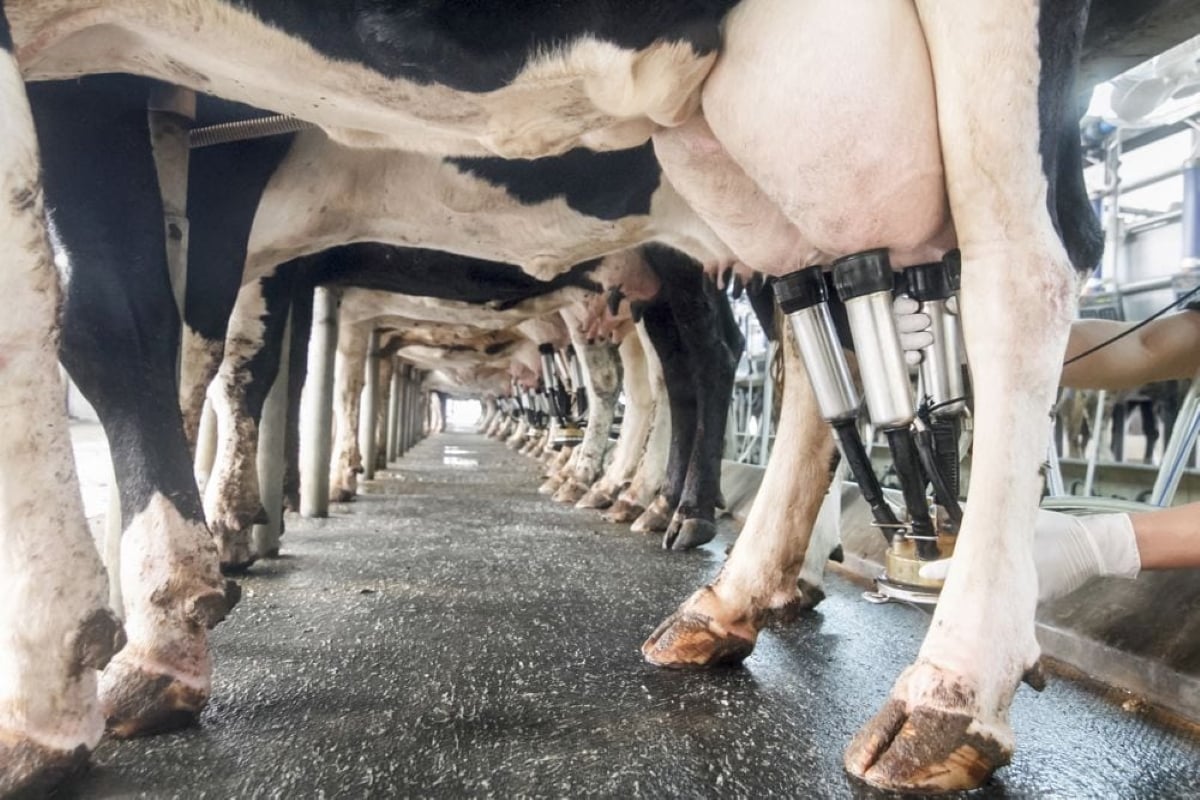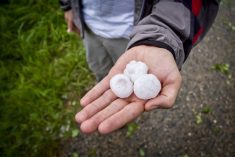SOUTH
Good weather conditions have allowed many producers to harvest. However, many operations were still at a standstill.
Thirty-one percent of the crop is combined and 35 percent is swathed or ready to straight cut.
Average yields are being reported, but quality remains an issue because of sprouting, bleaching and disease damage.
Small amounts of rain fell in most of the region. Areas such as Moose Jaw reported 21 millimetres. The Cadillac area has received 583 mm since April 1.
Topsoil moisture conditions on cropland are adequate. Hayland and pasture moisture is adequate, but many areas are wet and equipment is getting stuck.
Read Also

Farm gate milk price to rise in 2026
The Canadian Dairy Commission will raise its farm gate milk price by 2.3255 per cent in February, the Crown corporation announced on Friday.
Localized flooding, hail, wind, and waterfowl caused damage. Frost was also reported. Many later-seeded crops and alfalfa fields suffered damage. Some immature soybean and corn fields were severely damaged.
Producers report they are able to seed winter cereals, but many will not be able to seed the intended acres because of the late harvest and weather.
CENTRAL
Harvest made slow progress because of wet fields and scattered showers. Many crops are coming off tough.
Around 40 percent is swathed or ready to be straight cut.
Average yields are being reported, although there are quality concerns. Bleaching, sprouting, disease and insects are causing damage. There are reports of higher-than-normal green counts in some canola crops. Lower-than-expected yields are also being reported.
Localized flooding and strong winds have lodged many crops. Bethune reported 21 mm of rainfall. Since April 1, the Foam Lake area has reported 725 mm.
Topsoil moisture conditions on cropland are adequate. Hayland and pasture moisture is also adequate with some areas reporting short conditions.
Many areas are reporting low temperatures and damaged crops that are behind normal development. Wildlife and waterfowl have caused along with the frost. The low temperatures damaged later-seeded and immature crops.
Farm equipment isn’t supported on the wet fields, and many combines are getting stuck.
NORTH
Harvest continues at a steady pace. The dry weather conditions have allowed roughly 55 percent of the crop be swathed or ready to straight cut.
Yields have been reported as average, but many reports of seed damage are coming in. Sprouting, bleaching, wheat midge and frost are the main culprits.
The Arborfield area reported 12 mm of rain while the Hafford area has received 490 mm since April 1. Topsoil moisture conditions are highly adequate, as are hayland and pasture topsoil moisture conditions.
Frost caused the most damage with later-seeded crops. Wind and waterfowl also contributed. Much of the soybean crop was damaged.













